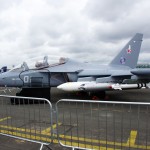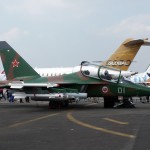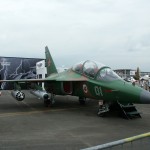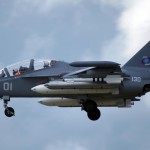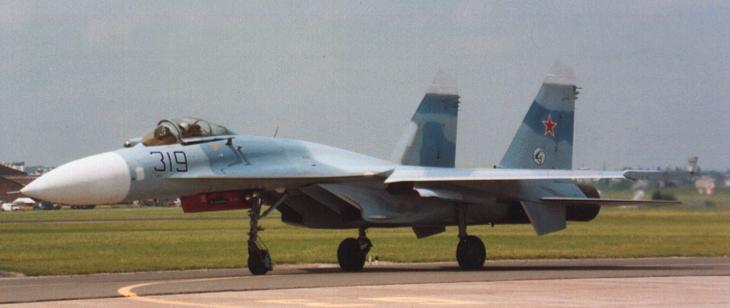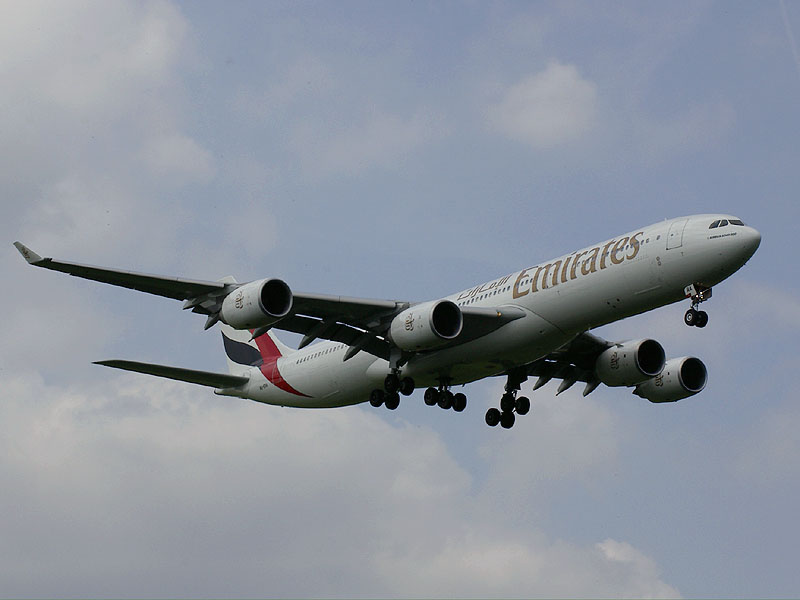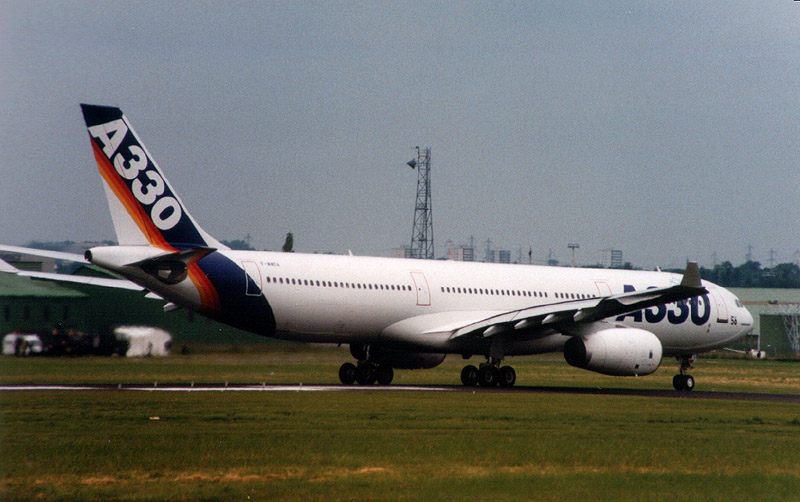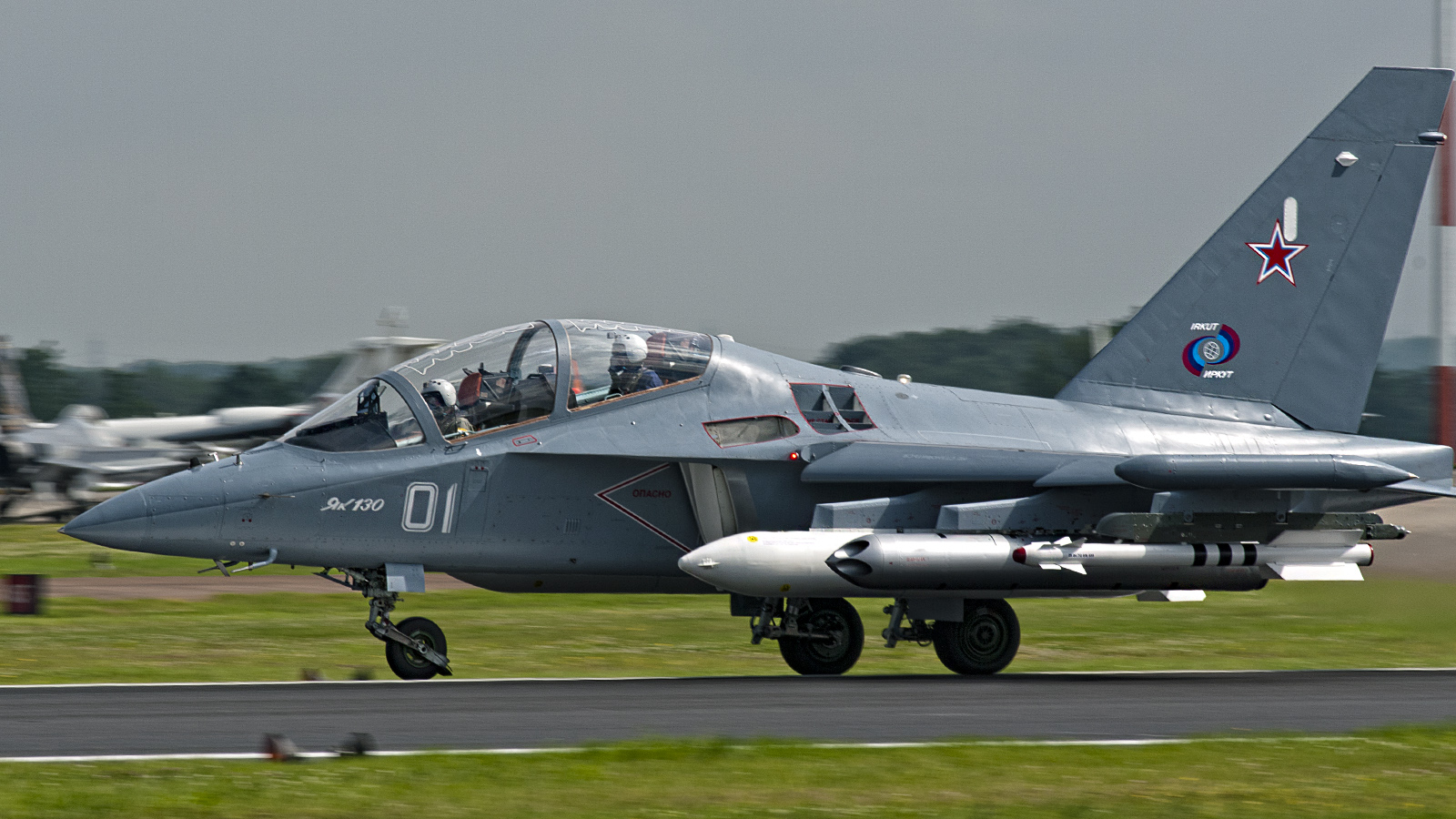
The Yakovlev Yak-130 is a subsonic swept mid-wing two-seat advanced jet trainer/light attack aircraft or lead-in fighter trainer developed by Yakovlev. Development of the plane began in 1991, as a joint programme for trainer development between Yakovlev of Russia and Aermacchi of Italy began in 1993 and the Yak / AEM-130D demonstrator first flew in 1996. In 1999, the partnership was dissolved and the Yakovlev Yak-130 and the Aermacchi M346 Master became separate programmes.
Developing nation: Russia.
Manufacturer/designer: Yakolev.
Production Lines: Aviation Plant Sokol in Nizhny Novgorod, known as NAZ Sokol .
Type aircraft: Advanced trainer / Light fighter .
First flight: 26 April 1996.
First delivery: February 2010.
Produced: 2008 – .
The Yak-130 is of classical swept-wing and empennage monoplane design and light alloy construction with carbon-fibre control surfaces. Kevlar armour protection is fitted to the engines, cockpit and avionics compartment.
The Yak 130 aircraft can be operated from unpaved runways and small unprepared airfields as the aircraft’s landing gear is designed with high take-off.
The aircraft has an air-conditioned and pressurised two-seat tandem cockpit fitted with NPO Zvezda K-36LT3.5 zero-zero ejection seats. The aircraft has an all-glass cockpit. Both pilot positions are night vision goggle compatible and equipped with three multifunction 6in x 8in colour liquid crystal displays. The pilot in the forward cockpit can use the helmet-mounted sight for target designation.
The Avionica fly-by-wire flight control system is used to adjust the stability and controllability characteristics and flight safety systems to simulate a number of aircraft such as the MiG-29, Su-27, Su-30, F-15, F-16, F-18, Mirage 2000, Rafale, Typhoon and future fighters such as the F-35.
The aircraft combat training system provides simulation of:
- air combat with tracing, detection, identification, locking-in, and tracking of air targets, with launching of air-to-air missiles fitted with radar and IR homing heads, with imitation of enemy missiles and jamming launching and with application of airborne defensive aids system;
- interaction with other aircraft in group and with ground and air control units;
- air-to-ground attacks with launching of air-to-surface missiles fitted with radar, TV, IR and laser homing heads, with bombs and rockets releasing, gun firing, with imitation of enemy surface-to-air missiles and jamming launching and with application of airborne defensive aids system.
Orders
In 2005, the plane won a Russian government tender for training aircraft and in 2009, the first planes entered service with the Russian Air Force, which placed firm orders for 55 aircraft.
The first export orders were signed in 2006, when Algeria ordered 16 Yak-130s and Libya put an order in for 6 planes.
Deliveries to Libya were expected in 2011–2012, but after the downfall of the Gaddafi regime, the Libyan National Transitional Council canceled Libya’s order for Yak-130s in September 2011 as part of a review of all existing arms contracts.
Syria agreed to buy 36 Yak-130s for $550 mln in 2011.
Demo Team
RuAF Commander-in-Chief Col Gen Alexander Zelin announced in March 2012 that a new aerobatics team flying Yak-130s would be created by 2015.
Specifications Yak-130
General characteristics
- Crew: 2 pilots
- Length: 11.49 m (37 ft 8 in)
- Wingspan: 9.72 m (31 ft 10 in)
- Height: 4.76 m (15 ft 7 in)
- Wing area: 23.52 m² (253.2 sq ft)
- Empty weight: 4,600 kg (10,141 lb)
- Loaded weight: 6,350 kg (14,000 lb)
- Max. takeoff weight: 10,290 kg(22,685 lb)
- Powerplant: 2 × Progress AI-222-25 turbofan, 2,500 kg (5,512 lbf) each
Performance
- Maximum speed: 1,050 km/h (644 mph)
- Cruise speed: 887 km/h (551 mph)
- Stall speed: 165 km/h (103 mph)
- Range: 2,546 km (1,582 miles)
- Service ceiling: 12,500 m (42,660 ft)
- Rate of climb: 50 m/s (10,000 ft/min)
- Wing loading: 276.4 kg/m² (56.60 lb/sq ft)
- Thrust/weight: 0.78
Armament
Nine hard points for a mixed load of all types of Russian and western air to air (short to medium range) and air to ground dumb and smart bombs.
All pictures courtesy of Zijde Aviation Photo and Publishing, Rob Vogelaar / Marcel van Leeuwen


